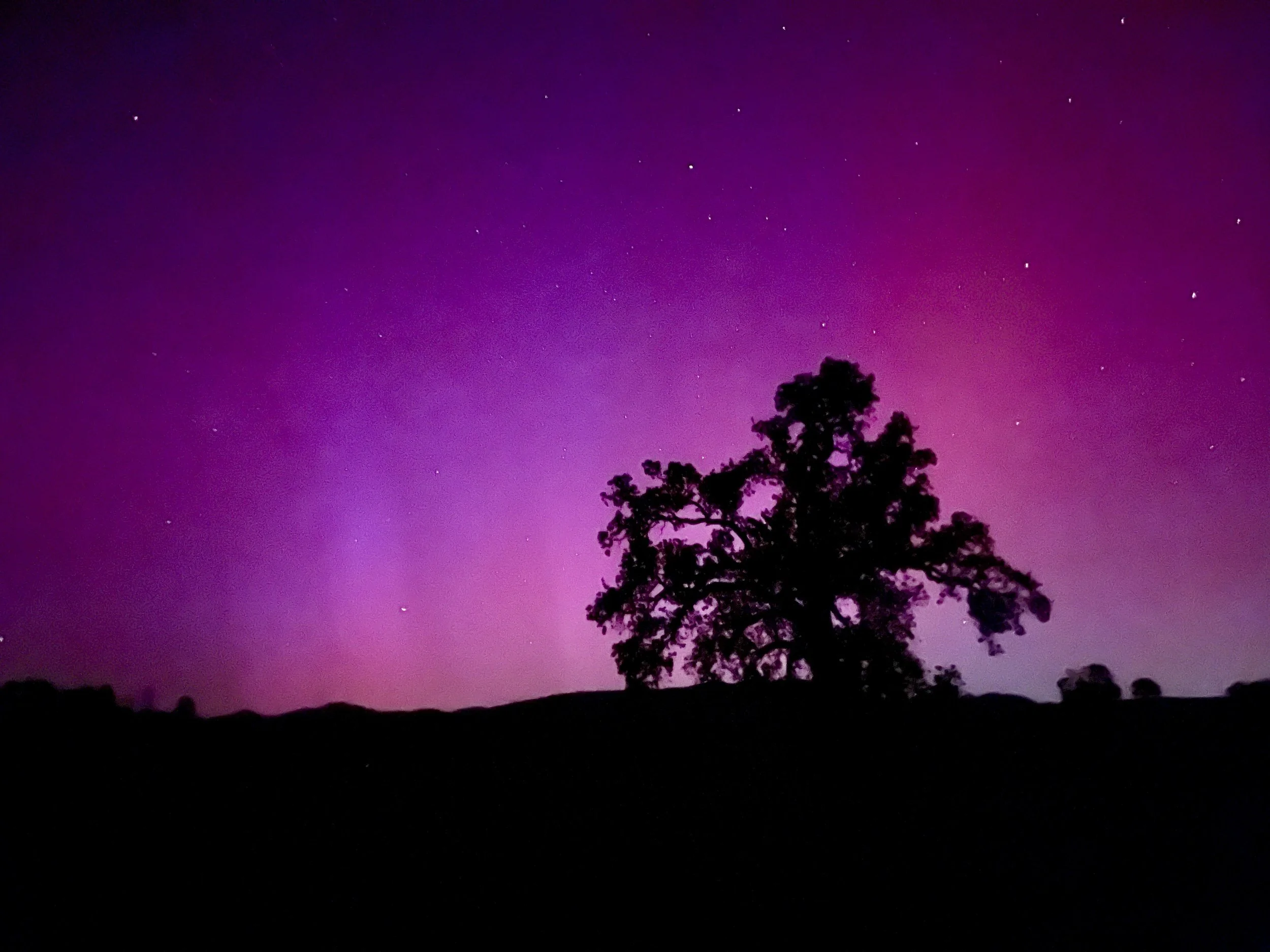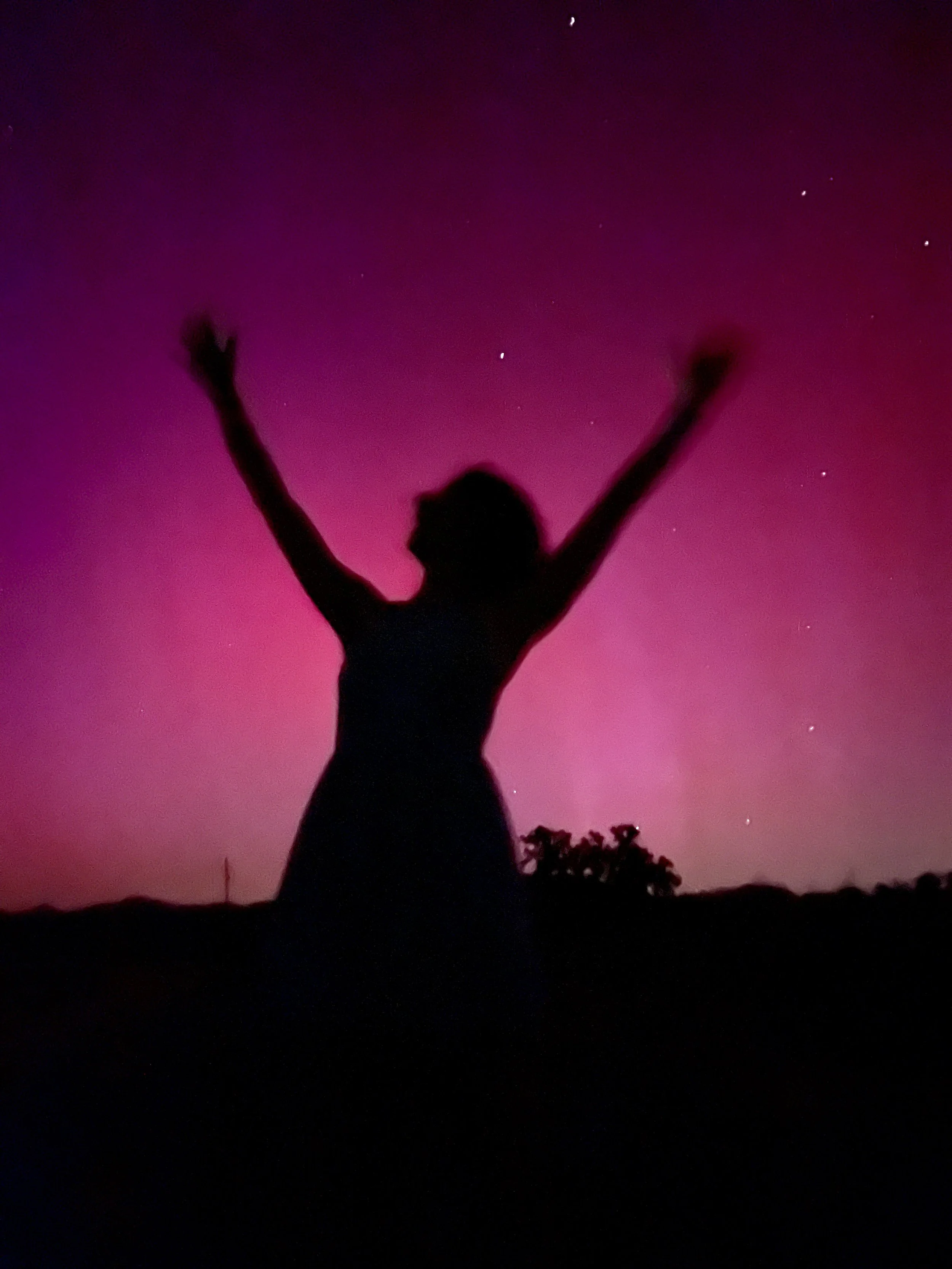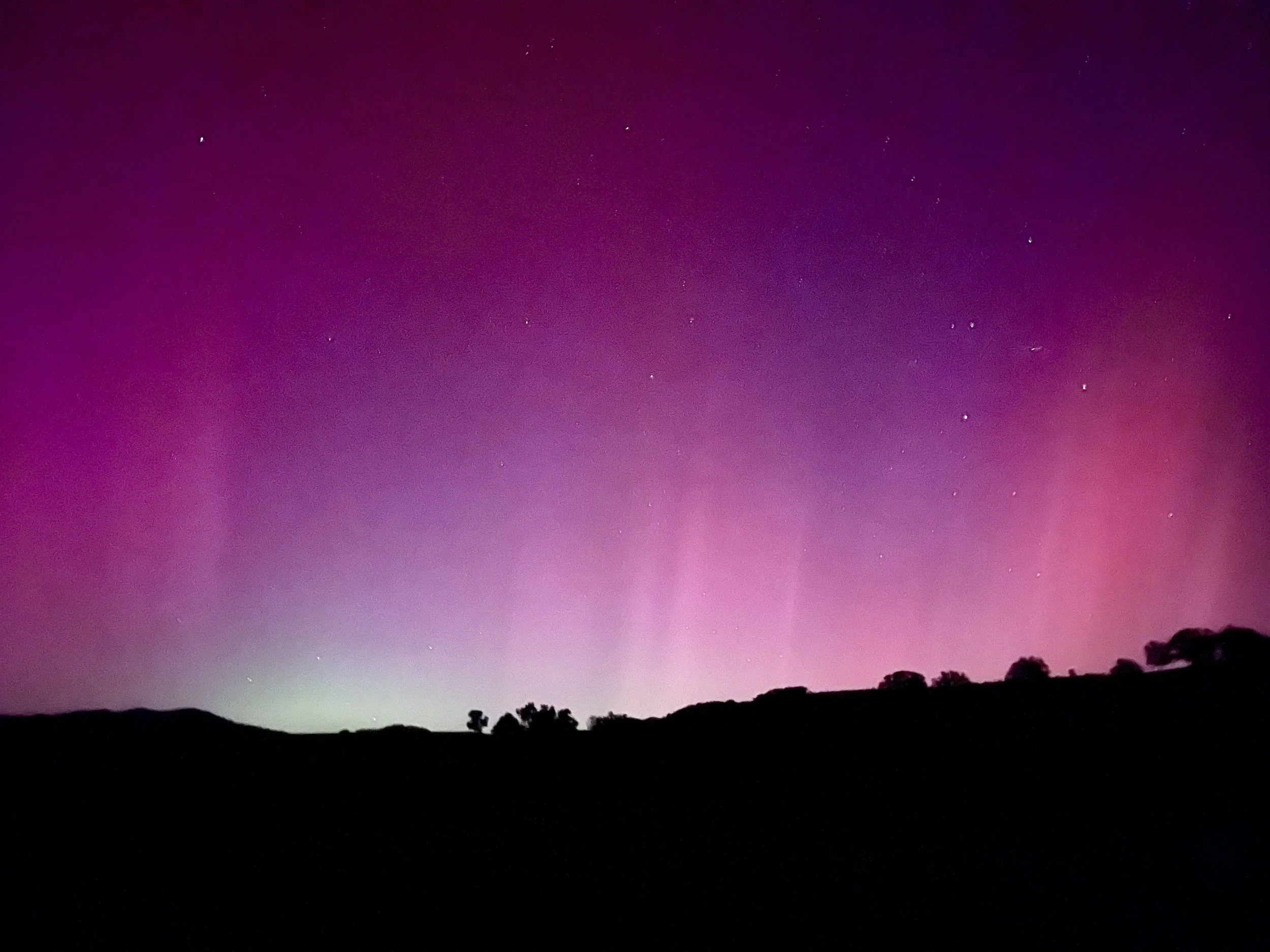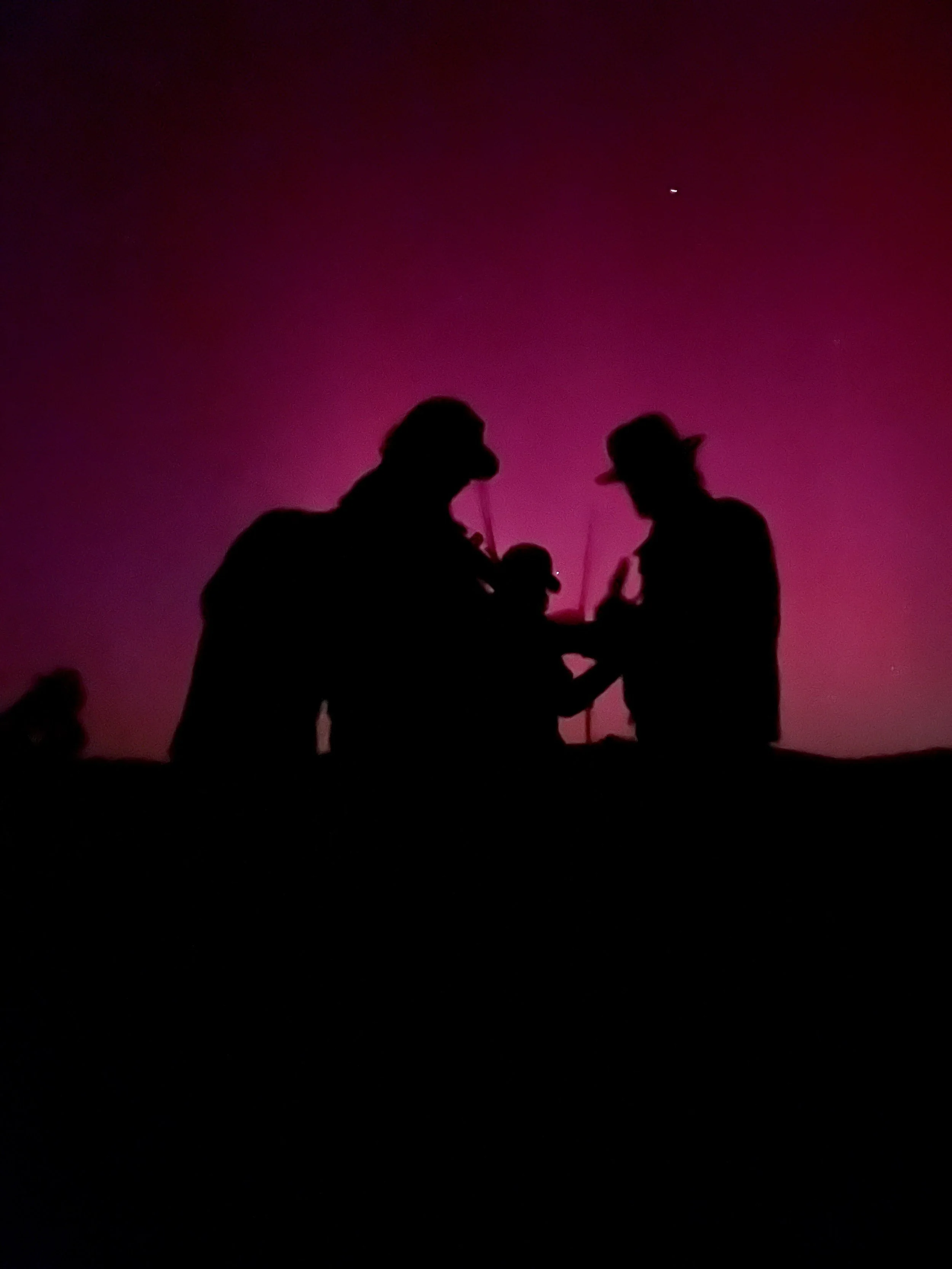WONDER AND POSSIBILITY AS A SALVE FOR BURNOUT
2024 has been the year of astronomical events for me. First the northern lights in Alaska, then the total solar eclipse in Texas, and this month the northern lights again but in CENTRAL CALIFORNIA?
I just happened to be camping at the Parkfield Bluegrass Festival. The closest city to Parkfield, population 18, is Fresno 67 miles northeast. It has very low light pollution so the lights were clearly visible.
We stepped out of the dance hall just after 11:00 and the sky was glowing red. It looked like several used car lots were advertising a sale with spotlights streaking through the atmosphere in the distance. We walked north down a deserted road past the campsite lanterns and the din of the festival.
Even though I knew there was a once in two decades solar storm happening, my expectations were low. I spent four below freezing nights shivering well past my bedtime to see the northern lights in Fairbanks. I never imagined I would be smelling the familiar California grasses, listening to the crickets sing, and watching streaks of color shift through the silhouette of valley oak in 60 degree weather under the aurora borealis 116 miles south of where I live.
I remind myself of the wonder and possibility of those moments, mouth agape, lying on the still slightly warm concrete in the middle of a country road, now that I’m back in foggy Santa Cruz.
Connecting with wonder and possibility is one of travel and adventure’s greatest gifts.
Languishing in the humdrum routine of our lives makes it hard to imagine what else is possible. We struggle to see over the walls of our deeply worn rut. Fear whispers in our ears only what could go wrong. It becomes difficult to see past the exhaustion and cynicism of burnout toward a way out.
Awe inspiring events offer a glimmer of hope, a touchstone for a different way of thinking, and can serve as a lightening rod of inspiration in areas of our lives where we previously felt stuck. If highly unlikely good things happen, like the shimmering northern lights in Central California, what else is possible?
Poet David Whyte shares that the antidote to exhaustion is not necessarily rest, it is wholeheartedness. Sometimes the answer to burnout is do less. And sometimes the answer is do more. Find more awe, more wonder, and more opportunities to wholeheartedly engage with the world. Find things that make you feel the opposite of emotional exhaustion and detachment of burnout; shoot for vigor, dedication, and absorption.
Instructions for Cultivating Awe
Research suggests that awe–the experience of respect, wonder, and amazement–can have a profound effect on minds, bodies, and relationships. Awe makes us healthier, happier, more creative and generous. By reminding us that we are a small, interconnected part of something larger and more powerful--the universe, nature, society, etc.--awe helps us gain perspective.
Seek out places that are likely to evoke awe. Awe is most likely to occur in places that have two key features:
Physical vastness--Whether taking in the sprawling city skyline from the top of a Tokyo skyscraper or the star-scattered sky in the darkest desert, physical vastness can be found in urban and rural settings as well as everything in between. You can gaze up at the wide sky, a tall tree, or a grand cathedral; down from a peak, a rooftop, or the edge of a canyon; or out across a vast ocean, rolling hills, or a cityscape.
Novelty--While everything is novel and mysterious when you travel, you can also try to see familiar settings through new eyes to inspire awe in your day-to-day life. Try to let go of expectations and preconceptions and engage your curiosity. Natural environments, even the squirrels outside your window, are an ongoing source of novelty.
Seek out things that are likely to evoke awe. You can intentionally evoke awe by exposing yourself to music, art, and culture. Consider visiting an art or science museum, exploring ancient ruins, watching a local music or dance performance, or engaging in a religious or spiritual practice.
Seek out people that are likely to evoke awe. Research shows that the most common source of awe is moral beauty, i.e. actions that reflect character, virtue, and generosity. Listen to a podcast about someone using courage and strength to obstacles; volunteer at a soup kitchen where you can observe acts of kindness and generosity; or bear witness to someone’s incredible talent, whether it’s an adult doing something truly remarkable or a child demonstrating their natural albeit astonishing development.
Limit distractions. Distractions will impede your ability to experience awe. Shift your attention away from internal distractions–the ever present ticker tape of thoughts and images running through your mind–and toward what’s happening around you. Try to spend some time alone and without your phone. When you feel goosebumps or a sense of wonder arise in your body, take a moment to be present. Notice the details of your physical environment and what emotions arise.
With the right mindset, even a neighborhood walk could be totally awesome. Set aside 15 minutes and follow these instructions once you step outside your door
These photos are shot with my phone. Ok, to be honest, the northern lights are not quite as vibrant in person. The long exposure pumps up the colors a bit. And I did smash that magic wand “enhance” icon in iPhoto (so sue me).






